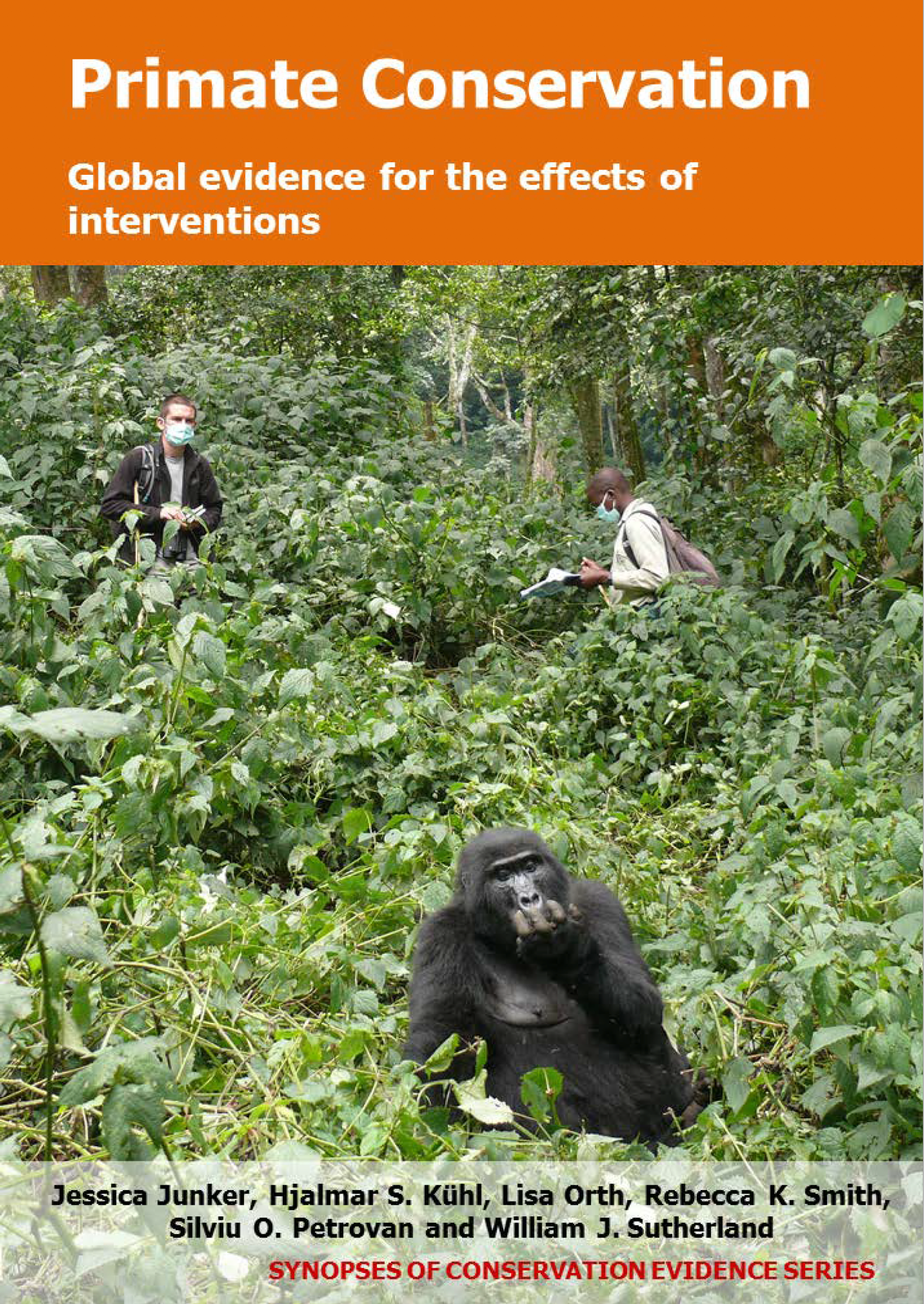Provide better equipment (e.g. guns) to anti-poaching ranger patrols
-
Overall effectiveness category Likely to be beneficial
-
Number of studies: 3
View assessment score
Hide assessment score
How is the evidence assessed?
-
Effectiveness
50% -
Certainty
40% -
Harms
0%
Study locations
Supporting evidence from individual studies
A before-and-after trial in 1984-1987 in tropical montane forest in the Virunga ecosystem in Rwanda and the Democratic Republic of Congo found that after anti-poaching guards were provided with better equipment that allowed them to increase patrol frequency and effectiveness, alongside other interventions, mountain gorilla Gorilla beringei beringei numbers increased from 242 to 279 individuals (15% increase) from 1981-1986. In addition, average group size increased from 8.5 to 9.2 individuals (17% increase) and immature proportion increased from 39.7 to 48.1% (8% increase) over the same time period. Regular total counts of this population were conducted since 1973 by research staff. Anti-poaching guards regularly removed ground snares and conducted anti-poaching patrols. In 1979, a multi-organisation funded conservation project was initiated. In 1985, a gorilla viewing tourism programme was started during which three gorilla groups were habituated for tourist viewing. The study does not distinguish between the effects of the different interventions mentioned above.
Study and other actions testedA review on the status of mountain gorillas Gorilla beringei beringei in 1972-1989 in tropical montane forest in Eastern Virungas Conservation Area, Uganda found that no gorillas were killed in 1989-1990 after the game guard force was provided with better equipment alongside other interventions. The number of game guards was increased from three to 13 men, who were trained and supervised by researchers. In January 1989 a permanent research project was established. Human settlers were relocated from an area (3 km2 in size) that represented the most important gorilla habitat inside the Gorilla Game Reserve within the Eastern Virungas Conservation Area. The study does not distinguish between the effects of the different interventions mentioned above
Study and other actions testedA before-and-after trial and site comparison in 1976-1988 in tropical forest of the Volcanoes National Park, Rwanda found that the number of immature mountain gorillas Gorilla beringei beringei on the Rwandan side of the park increased and snares decreased after the implementation of regular anti-poaching patrols, alongside other interventions. The number of immature individuals increased by 22% on the Rwandan side of the park, but declined by 30% on the side of the park in the other two countries. However, no statistical tests were carried out to determine whether these differences were significant. Patrols were initiated in 1979, but the study did not report on further details relating to the anti-poaching methods used. Funds provided by a tourist programme enabled the training, equipping and management of the anti-poaching patrols. In 1976, all cattle were removed from the park in Rwanda. A conservation education programme was implemented, but no further details were reported in the study. The study does not distinguish between the effects of the different interventions mentioned above.
Study and other actions tested
Where has this evidence come from?
List of journals searched by synopsis
All the journals searched for all synopses
This Action forms part of the Action Synopsis:
Primate Conservation
Primate Conservation - Published 2017
Primate Synopsis





)_2023.JPG)














